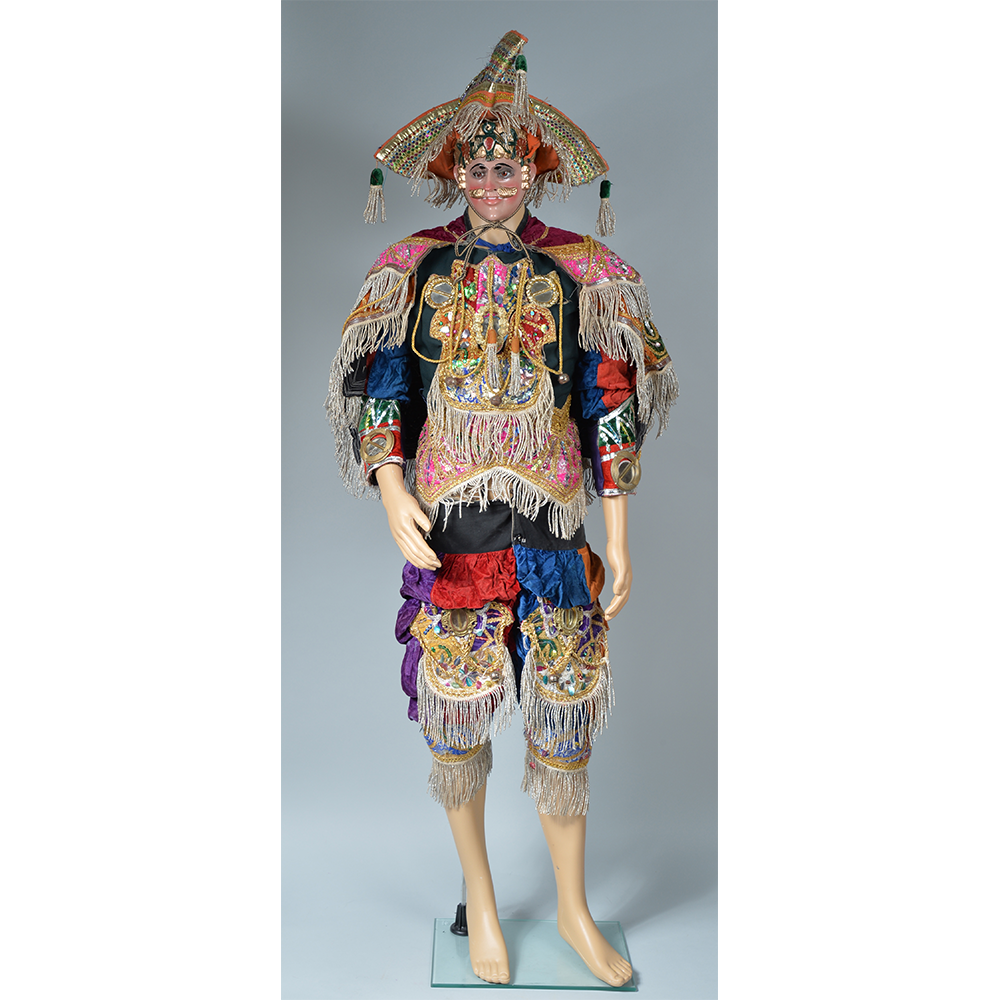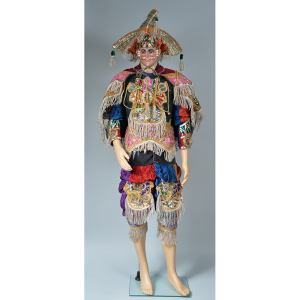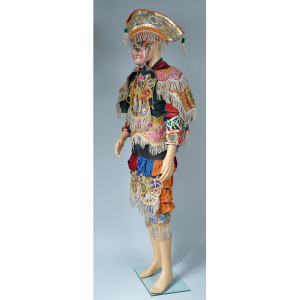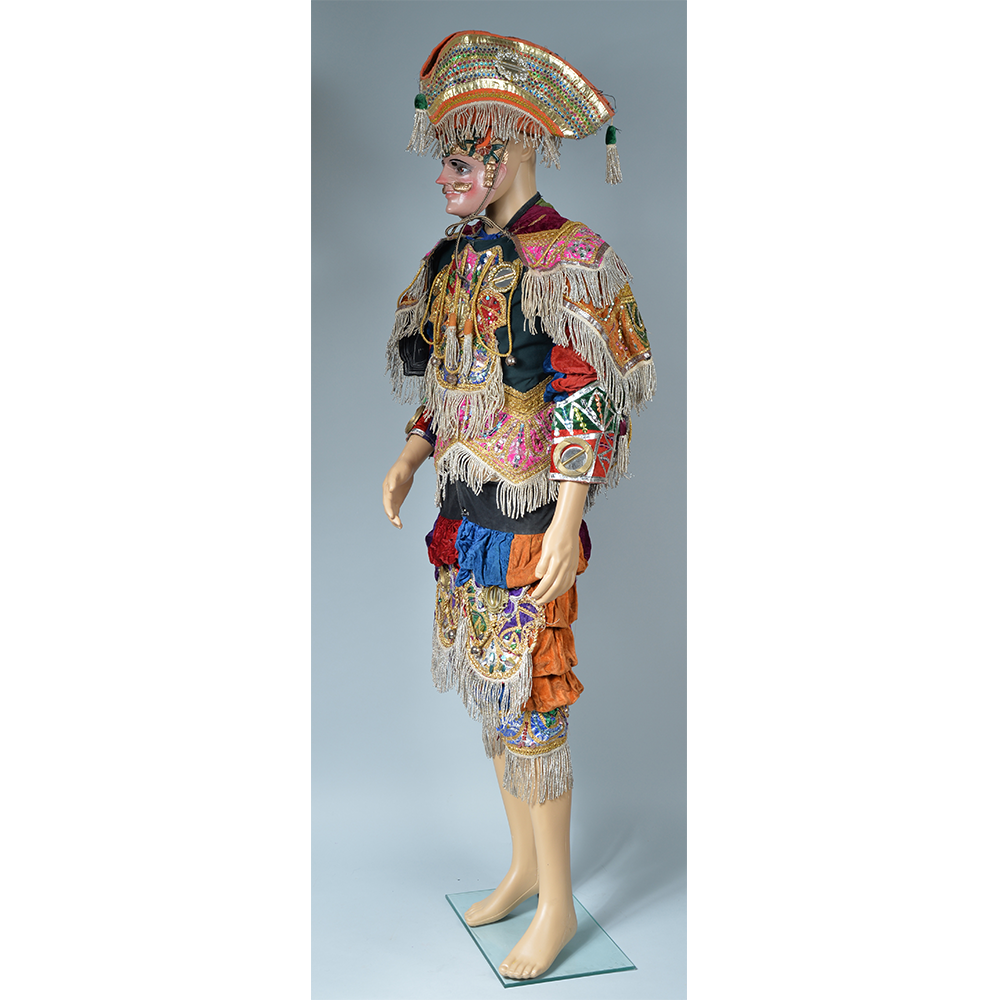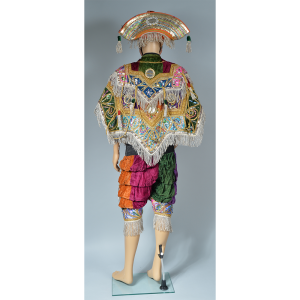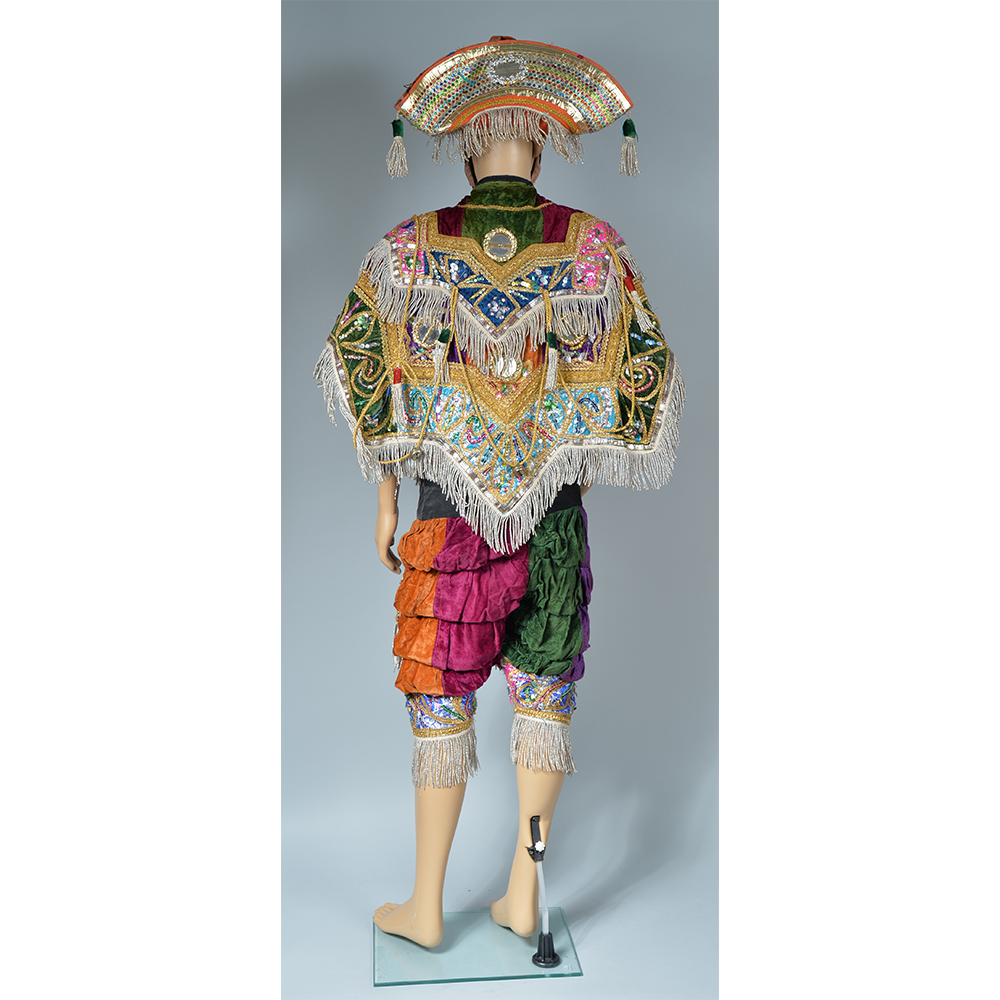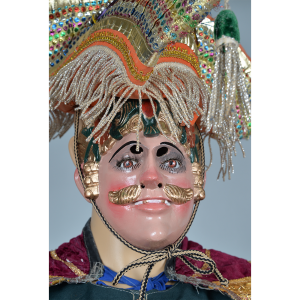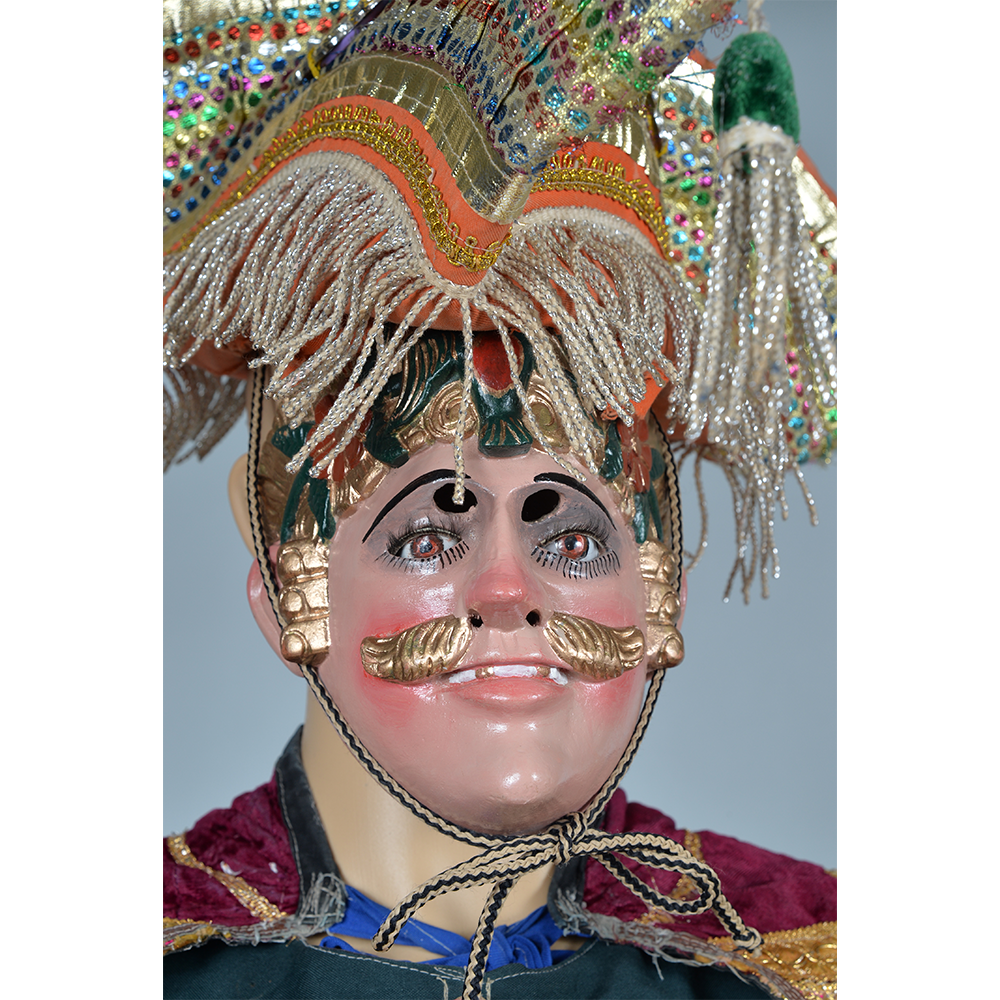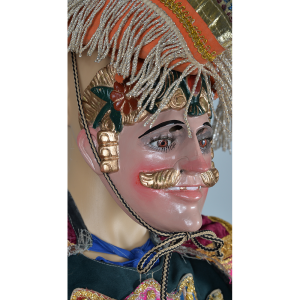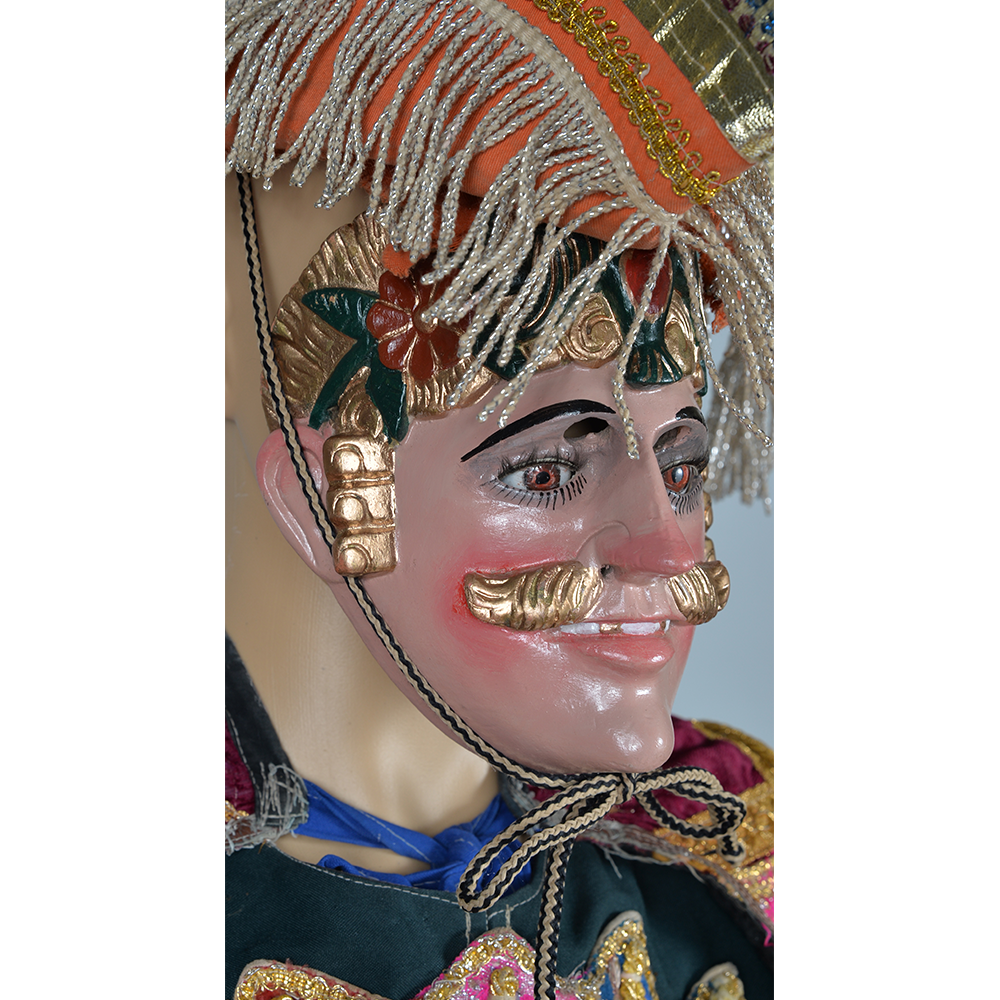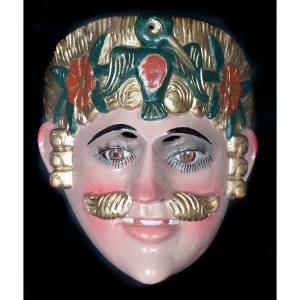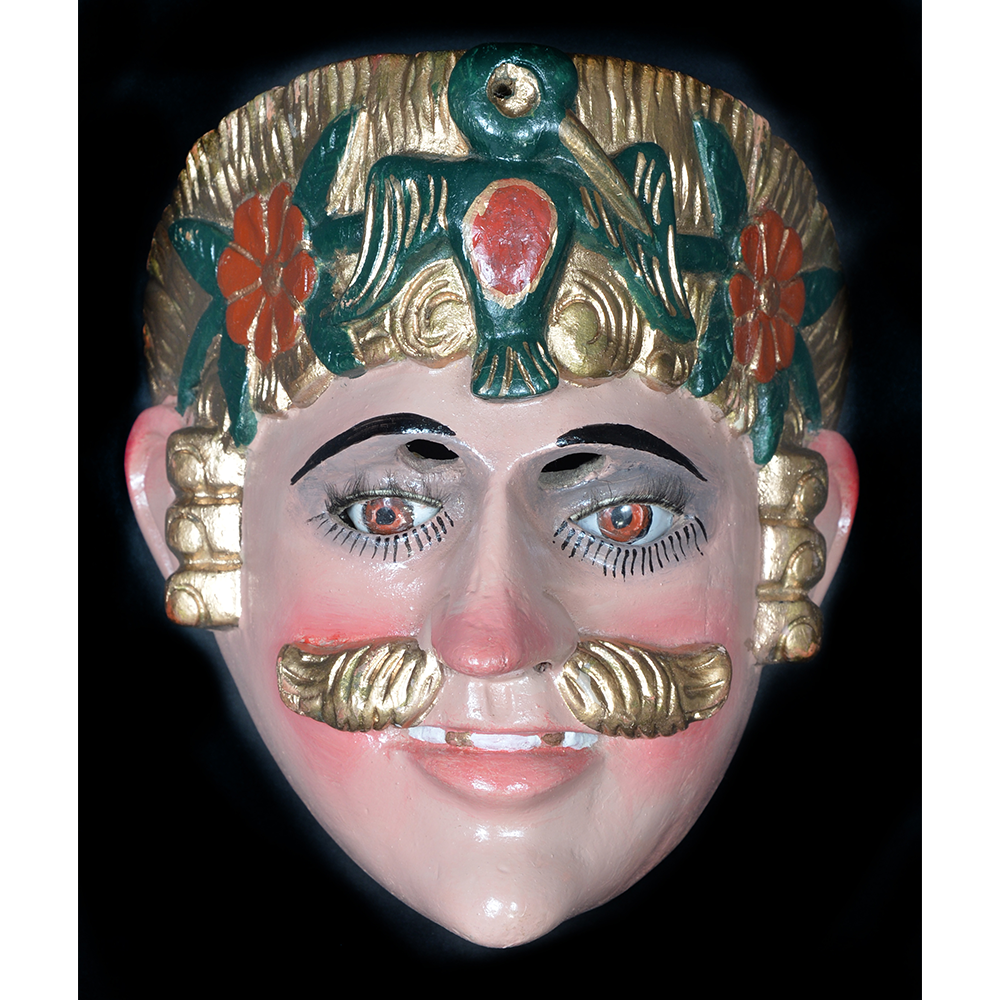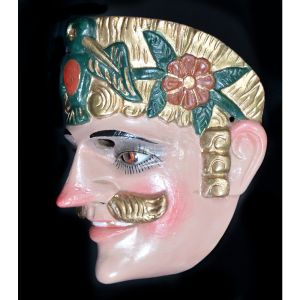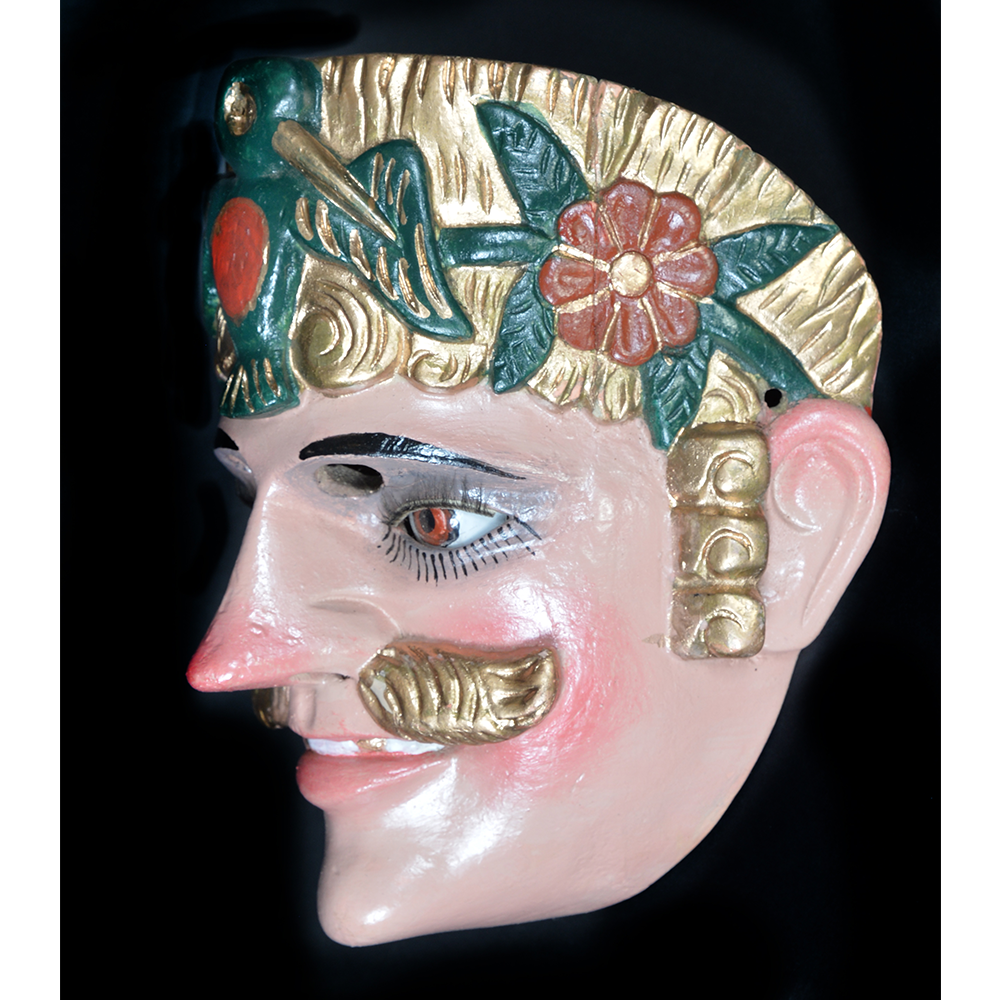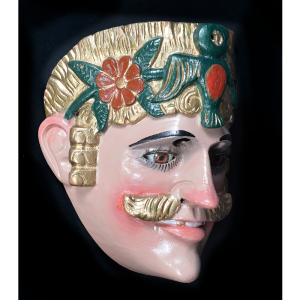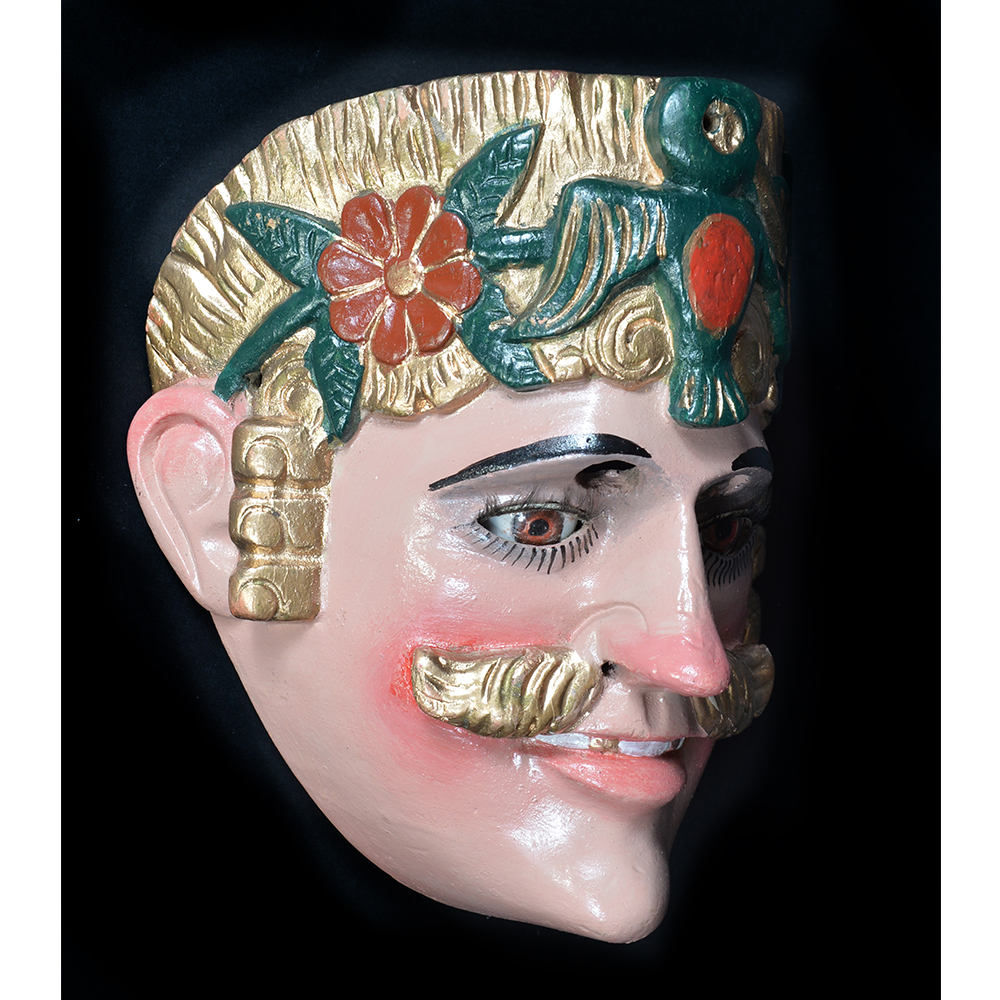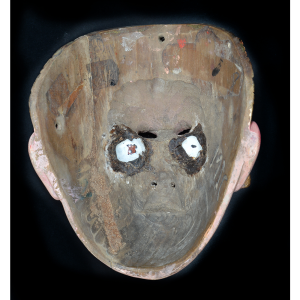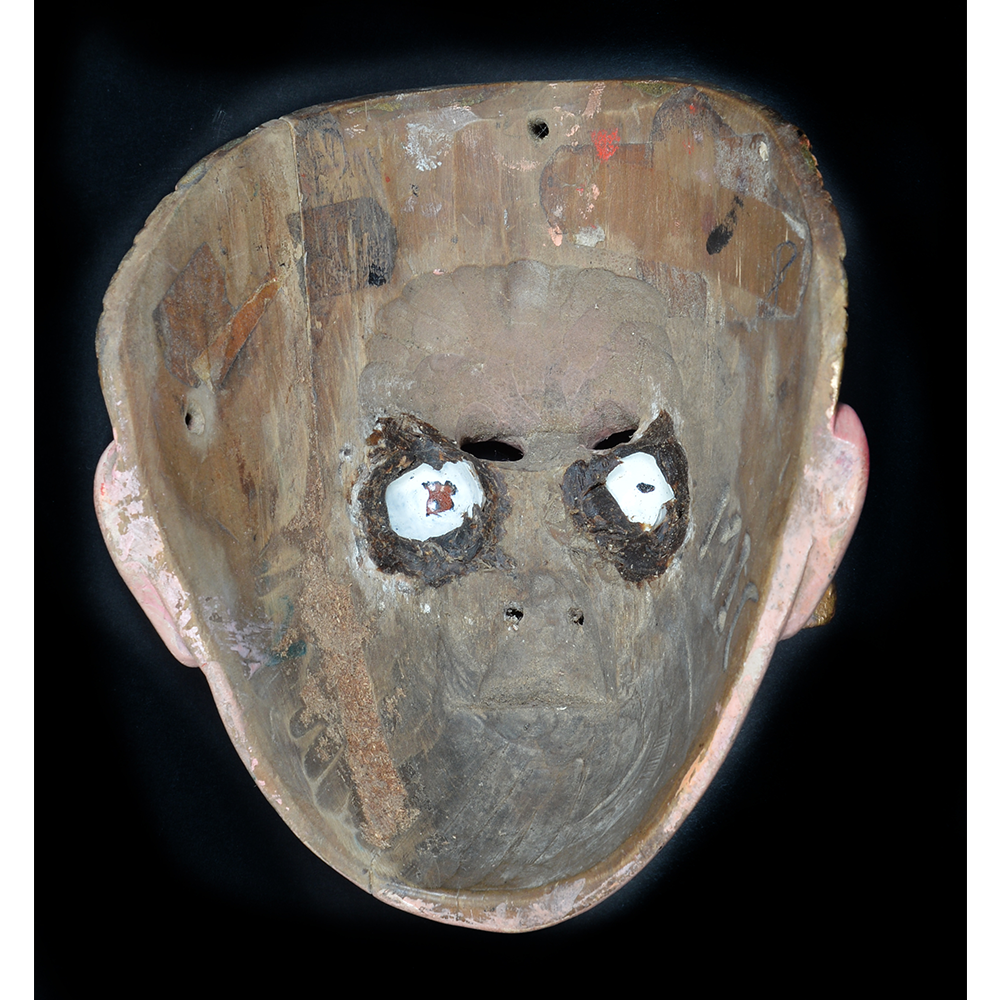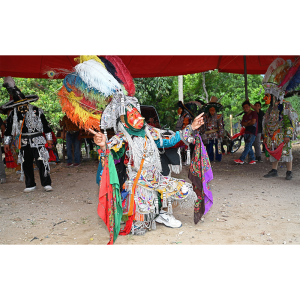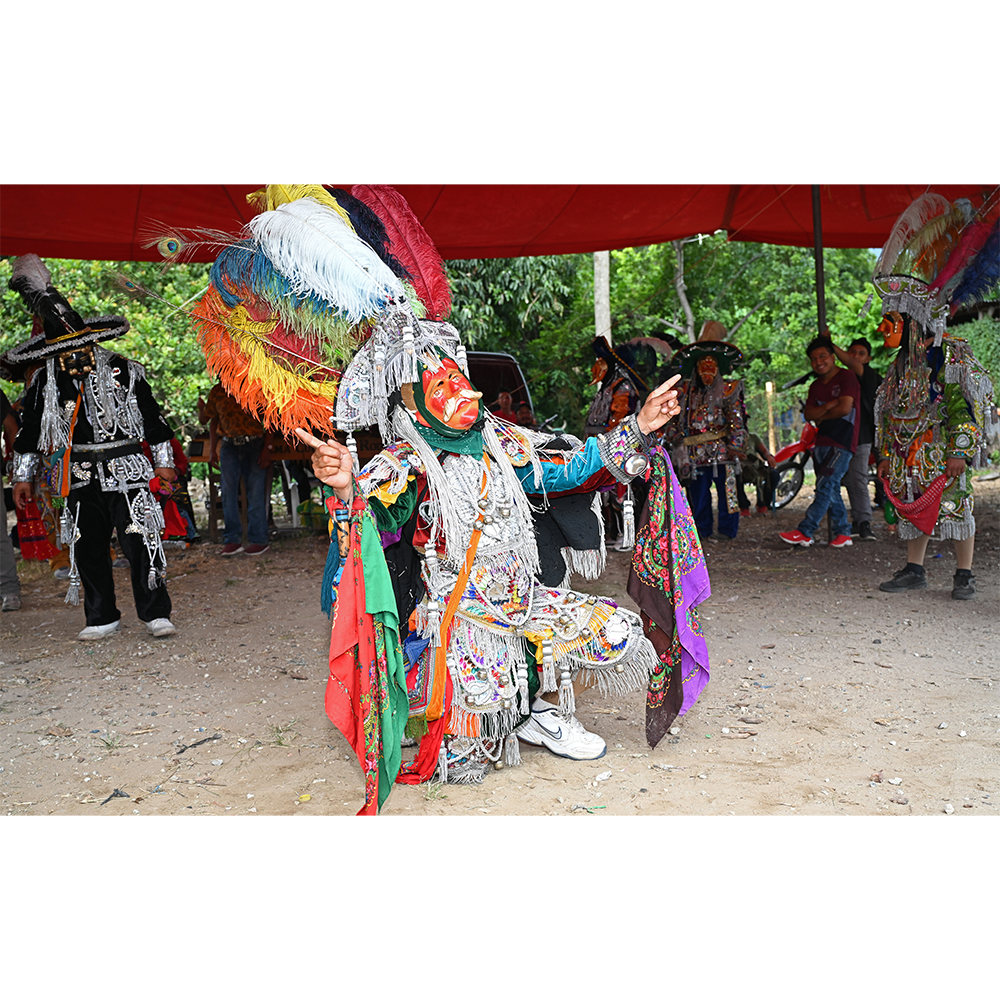TITLE: Moro Mask and Costume
TYPE: face mask; costume
GENERAL REGION: Latin America
COUNTRY: Guatemala
SUBREGION: Solalá
ETHNICITY: Mayan (K’ich’e)
DESCRIPTION: Moro (Moor) Mask or Vaquero (Cowboy) Mask with full costume
CATALOG ID: LAGT026
MAKER: Miguel Ignacio Calel (Chichicastenango, 1926-2013)
CEREMONY: Danza de la Historia de los Moros y Cristianos; Baile del Compadrito
AGE: 1950s
MAIN MATERIAL (mask): wood
OTHER MATERIALS (mask): oil-based paint; handpainted glass eyes; synthetic eyelashes; adhesive
MAIN MATERIAL (costume): cotton cloth
OTHER MATERIALS (costume): synthetic cloth; synthetic ornaments; mirrors; metal hardware; wicker
The Danza de la Historia de los Moros y Cristianos (Dance of the History of the Moors and Christians) reenacts the reconquest of Spain by the Christians from the Muslim Saracens. The story was taught by missionaries as part of an effort to instill respect for and fear of the Spaniards in the indigenous peoples, and to convince them that the victory of Christianity over other faiths—by violence whenever necessary—was inevitable.
The dance is still performed in parts of Guatemala. Important characters include Spaniards, Moors, saints, angels, and devils. This moro takes a form typical in the region of Solalá, with white skin, golden hair, and a resplendent quetzal bird on the forehead.
This mask is also used to represent a cowboy (vaquero) in the Baile del Compadrito (Dance of the Little Buddy) or Baile del Caxuxa of Cubulco. In this dance, a large number of cowboys, led by a black cowboy, dance with a little bull (torito) to the music of saxophones and marimbas. As they dance and try to catch the bull, they get increasingly drunk. As they get more drunk, they increasingly make jokes and clown around with the audience and each other.
For more on Guatemalan masks, see Jim Pieper, Guatemala’s Masks and Drama (University of New Mexico Press, 2006).
